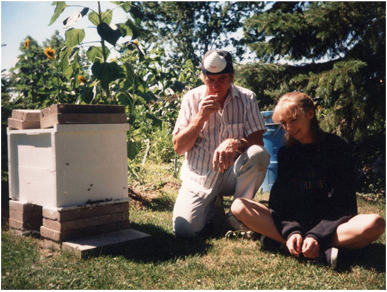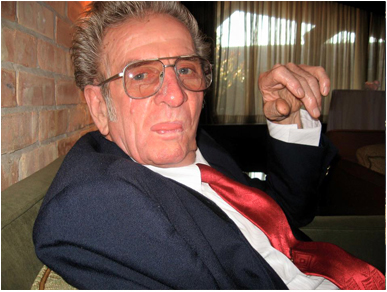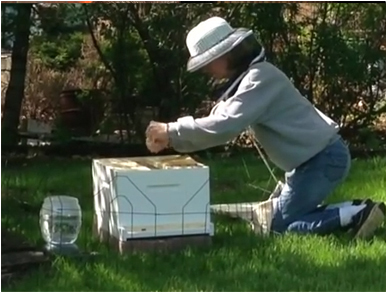In the Beginning
My interest in beekeeping began several years ago when my dad managed to catch a swarm of honeybees. He had come across the swarm in the yard and quickly built a wooden box to house them in. Somehow, without any of the protective gear, he managed to get them all into the new hive. He put the hive next to his garden, and occasionally I would stop by to sit and watch the bees come and go with their legs loaded with pollen. I had no idea what was going on inside that wooden box, and at that point I had no desire to open it at all. I was happy just watching them fly.

Those bees didn’t make it through the winter. My dad never took honey from that hive and just gave up on his new hobby after the bees were gone.
A few years later, in 2005, I was looking for some ideas for a Father’s Day gift when I remembered his beehive in the garden. I searched online for beekeeping equipment and found Dadant’s website, from which I ordered a beginning beekeeper setup for him. It was one brood box and two medium honey supers with all of the protective clothing and tools needed to maintain a small beekeeping operation. It included a subscription to The American Bee Journal, and although my dad wasn’t a big reader, I saw him read those magazines cover to cover and even renew his subscription when the first one was up. He found a supplier from which to purchase some bees, and by the following spring he had used the one hive I had sent him as a template, building two more on his own in the garage. The mailman showed up at the house with three boxes of buzzing bees, and he was a beekeeper again.
On one of my visits home that fall, my dad presented me with a giant glass mason jar full of honey. Everyone in the family and several neighbors also received jars. He met other local beekeepers and was put on the list of people to call if you find a swarm of honeybees in your yard. There were beekeeping supplier catalogs all over the house.

In November 2007, my dad was diagnosed with stage 4 melanoma. He went through surgery and started chemotherapy, but it was already too late to stop it. By the spring, when his packages of bees arrived in the mail, he was too weak to go out to the hives, so my brother installed the bees for him. My sister would put dad in a wheelchair and take him out to the beehives to watch the bees fly when he was having a good day. On August 1 of 2008, at the age of 75, he passed away. My brother took care of the bees with the help of another local beekeeper that my dad had befriended. After that, I didn’t think about bees for several years.
I started to read stories about colonies of honeybees dying all over the country. Colony Collapse Disorder was in the news on a regular basis. “Save the Bees” posts were all over the internet. Beekeeping classes started showing up in the junior college catalog. And then in November 2014 I ran into a beekeeper at a holiday craft show in Lockport. His name was Jim and he had a table set up with jars of honey and candles made of beeswax. My mom stopped to look at the candles and talked with Jim about how my dad had been a beekeeper, and Jim mentioned that he teaches a beginning beekeeper class at the junior college. He gave me a business card and told me to keep an eye out for the college catalog.

Two months later, on my birthday, I was online looking for a birthday present for myself. Jim’s business card was there on my desk, so just out of curiosity I went to the Dadant website to check pricing on a beginner beekeeper setup. And then I ordered it. And I found a bee supplier in central Illinois called Long Lane Honeybee Farms. And I ordered a package of bees. I had beehive parts all over the house. I installed that first package of bees and signed up for Jim’s class. I joined the Beekeepers Association and started going to the meetings. My bees filled their hive with honey that first season, all of which I left with them for the winter. I watch out the window every day, especially when it’s beyond cold out there, hoping they’re staying warm enough out there and have enough food to make it to the warmer days. When the temperature reaches 40-45 and the sun is out, the bees will come out to fly for a few hours and I can relax a little knowing that they’re still alive. I’ve taken discarded Christmas trees from my neighbors to use as a wind block around the hive. It’s become a little bit of an obsession, trying to make these bees survive the winter.
I’ve ordered two more hive setups, two more packages of bees, and on Christmas morning there was a honey extractor under the tree. So the goal this year is to produce some honey for all of my friends and neighbors who have been asking for some ever since I bought that first beehive. If there is any left over, It’s going in a jar with a Molly’s Bees Honey label on it and I’m selling it to raise funds to keep this hobby going.
